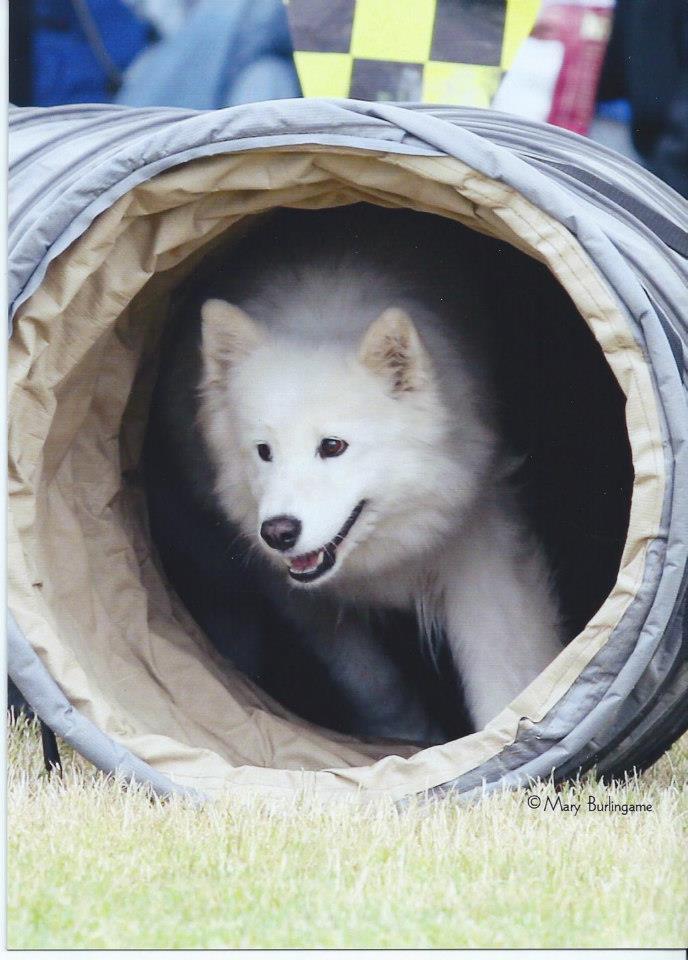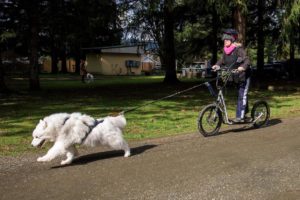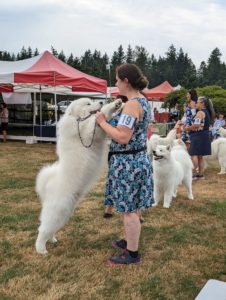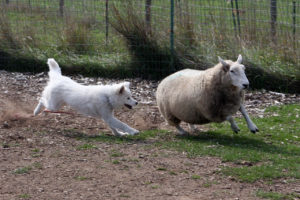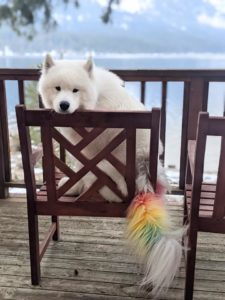Rally Obedience – AKC’s Newest Sport
RALLY-O!!
AKC’s Newest Sport Is Fun For Pets
By Denise A. Gordon
“What in the world is that?!” someone asked me at a recent show and pointed to the ring where stewards were setting up ground-level signs. I answered simply, “Rally obedience,” and explained the strange goings-on in the ring.
Rally obedience, or “Rally-o” as it’s quickly being termed by enthusiasts, is the latest American Kennel Club event to hit the show circuit. A non-regular (no titles given) class, it has some characteristics of rally sports car racing, dog agility, and traditional obedience combined into a new fun sport.
Depending on the sponsoring club’s wishes (and available help), one or both of the two levels are offered.
· At level one the dog is on-leash through novice style exercises,
· At level two has the dog off-leash through more advanced exercises, including at least one jump set at eight inches, 14 inches, or 20 inches according to the dog’s height at the withers.
· Either level may be timed or non-timed as stated in the premium list for that show or trial.
As in agility, each course is different every time and a layout is posted at ringside; handlers are also given a printed copy of the course and can walk it without their dogs prior to the start of the class. Ring size is roughly twice that of the 35-foot by 50-foot utility ring and accommodates 12-15 stations for level one and 15-18 obstacles for level two.
A sign at each station gives instructions to the dog-handler team, and each team must execute the station’s particular task within 2-4 feet of the sign. Once the judge gives the command “forward,” the dog and handler complete the course on their own without further commands from the judge, except for “exercise finished” at the end of the course. Handlers may do anything to encourage their dogs except physically touch them or make corrections with the leash. Signs instruct teams to go fast or slow, to halt (dog must sit at heel), to make turns and circles, to reverse direction, to do a sit-stay-recall, or other basic obedience exercises.
In non-timed courses, each team has a starting score of 200 points from which points are deducted for such faults as missed or incompletely performed stations, touching the dog, leash corrections, etc. The team with the highest score (i.e., fewest number of faults) wins first place, followed by the next highest score for second place and so forth.
In timed courses, the judge first walks the course with a stopwatch and calculates the amount of time that it takes a team to navigate the entire course (including halts, sits, downs, finishes, etc.); the team’s course running time is a total of the actual time plus the number of faults incurred. The team with the best run time wins first place followed by the next best run time for second place, etc. Non-regular class ribbons are awarded for the placements, but qualifying scores are not counted towards a title.
Many dogs enjoy this change from the usual silent heeling of traditional obedience as their owners can clap hands, talk, whistle (even sing!) to them throughout the entire course without penalty. Those who participate in agility trials will recognize the pre-class “walk-throughs” and the challenge of working with their dog partners in an almost dance-like flow from one station to another. A complete description of Rally Obedience, including the signs used in both levels, can be found on the AKC web page, www.akc.org/pdfs/ROR999.pdf, and at dog clubs that are sponsoring demonstrations and classes for an increasing number of dog owners who are happily exclaiming “Rally-O!”


